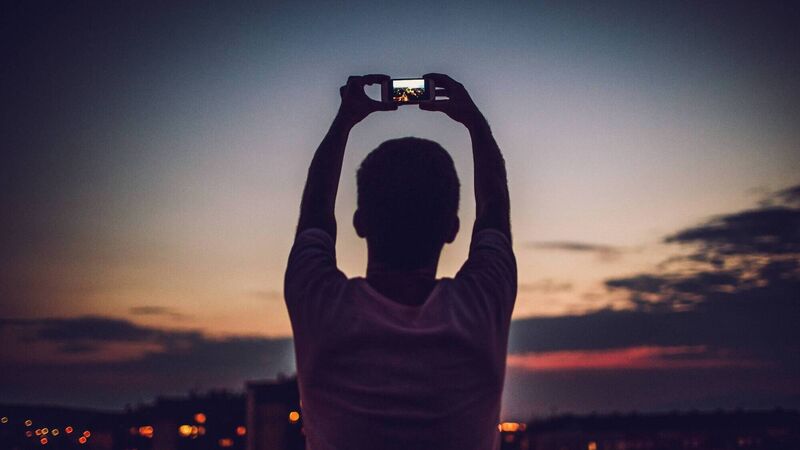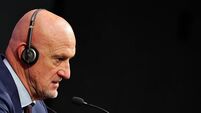Clodagh Finn: Camera phones have done more than teach us to pose for a selfie

The first camera phone emerged over 20 years ago but it was a number of years before they found their way into everyone’s pockets.
They are archaeological artefacts now. Or so it seemed to me when I excavated two little plastic canisters containing rolls of camera film from the forgotten flotsam and jetsam of a kitchen drawer.
I don’t know how old they are or where the photos within were taken. It can’t have been much more than a decade ago, even if the ritual of capturing adventures on Kodak and having them developed in one-hour photo shops feels like a lifetime ago.
The first camera phone was manufactured over two decades ago, but it was a number of years before they found their way into everyone’s pockets. And yet, they caught on with such breakneck speed that it feels as if film belongs not only to the last century but to the one before it — for citizen photographer at least.
And that’s just it. Even if some professional photographers still use film, we are living in the age of the citizen photographer.
Everyone is an archivist, a documentary-maker, a photojournalist now.
All you need is a smartphone and an eye for detail to show the world what is happening in your own corner of it.
This is both a good and a bad thing.
There are many who are quite justified in asking if the world needs more selfies. Or more narcissism because, as we’re told, the rise in the former has led to a spike in the latter? There are studies to prove it and many more to show the impact of becoming the star in your own social media show — a production that is made possible thanks to the camera phone.
It’s also hard to see the advantages of the mirror selfie, or indeed how to fake one because that is apparently a thing now. Merciful hour, as a neighbour of mine used to say. In either case, you have to strike the right pose. I came across two separate guides on how to do that recently and was struck by the clear thesis informing both of them. Toned and thin is good, soft and sagging is bad. But there is absolutely nothing new in that; in the world of the manufactured image, the ideal has changed little over time.
True, the emphasis shifts from time to time. One year, the bee-stung pout is in; the next it’s all about the thigh gap (the tyrannical idea that a person’s inner thighs should not touch), but so-called beauty ideals never really change much. All of them, without exception, are unattainable or at least pretty much unreachable without dieting, exercise, and large dollops of self-loathing.
What is encouraging in the ever-proliferating world of the selfie, though, is that the picture-taker has become the curator of their own image. That is very empowering and while the pressures of Instagram, TikTok, and social media, in general, are undeniable, at least the person holding the camera has new power. If they want to manipulate their own image, they can.
If that is fakery, it is also a manifestation of the democratisation of photography.
Some have used that to promote their own personal brand. And good luck to them, I say. Others have subverted the art of the photoshopped image and posted unfiltered pictures to highlight the reality of everything from ageing to living with cancer.
This summer, I’m hoping that someone “normal” will break the internet with an unfiltered photo of themselves in a swimsuit rather than the usual celebs who “pose poolside in a bikini” with spurious messages about body positivity.
I love those photos of people who skinny-dip for charity, for instance. Even though they are taken at a respectful distance, they show the wonderful variety of shapes and sizes that exist in the unedited world where body shape is a fact rather than a fashion statement.
They also show that women do not become invisible after the age of 50. It’s a bit long, but wouldn’t it be something to see the hashtag #TheLadyWillNotVanishAt50 trending along with a series of unfiltered photos of real women?
The camera phone makes such a proposition not only possible but easily attainable, which is one of the reasons I consider it a gift to the world rather than a curse.
It has also, quite literally, put the world at our fingertips. News is now in the hands of the bystander with a camera phone. We see the truth of that daily as news channels show quickly snapped images of floods, fires, and earthquakes taken by people who were on the spot.
Riots, protests, terrorist attacks, and wars are also within easy reach, although releasing those images to a wider audience raises ethical issues too often brushed aside. The protocols have not kept pace with the technology but then that is hardly surprising given how quickly everything has changed.
Cast your mind back to 9/11. It is interesting to recall the lack of camera-phone images of the September 11 attacks on the World Trade Center in New York in 2001. Yet, just four years later, the first images of the London bombings on 7 July 2005 came from the mobile phones of eyewitnesses.
On balance, however, it is good for democracy to think that ordinary people have the means to chart the horror of terror and war as it happens.
We have seen that most recently with the Russian invasion of Ukraine. Instead of hearing of the “collateral damage”, a feature of previous wars, we can see the unspeakable human toll of war.
Whether that helps us to hold the perpetrators to account remains to be seen, but at least citizen photographer is now empowered to present his or her own evidence.
Arthur Fields
On a much lighter note, it is the memory of one man of Ukrainian origin, Abraham Feldman, that illustrates the most important aspect of the camera phone for me. Arthur Fields, as he was known in Dublin, was the son of emigrants who fled antisemitism. He became something of a celebrity as a street photographer, taking some 180,000 photos of people on O’Connell St bridge in Dublin between 1930 and 1985.
I was one of them and still cherish the Polaroid taken in a queue for the cinema further up that street. The immediacy of the Polaroid was akin to the snap-and-show briskness of the camera phone. The impulse behind both, however, is exactly the same — a simple desire to say: “Look at us, we were there.”
I love all those “look at us, we are here” moments that come pinging into WhatsApp now; photos of family and friends at work and at play. Sit in any cafe and you will see at least half of those seated taking out their phones to share those precious moments with others.
The camera phone has done so much more than teach us how to pose for a selfie. We might look back some day and ask why we didn’t appreciate just how easy the glorious rush of human connection was then.
CONNECT WITH US TODAY
Be the first to know the latest news and updates











